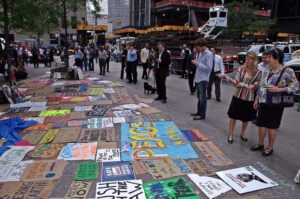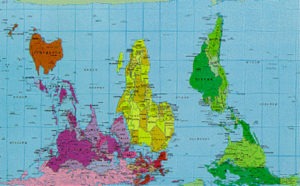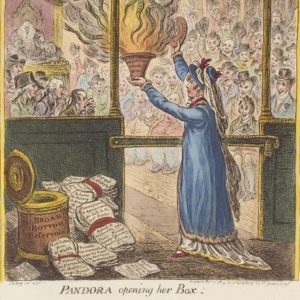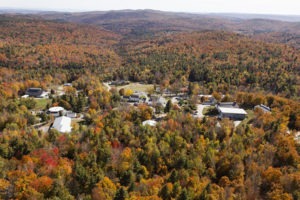November 8, 2011; Source: Politico | Filmmaker George Romero might need to remake “Night of the Living Dead” starring the former leaders of the now defunct ACORN. To the Republicans, they are the puppet masters pulling the strings on the Occupy Wall Street movement. Congressman Darrell Issa (R-CA) who chairs the House Oversight Committee has called for an investigation of some of the ACORN successor organizations (so-called because they either employ former ACORN leaders such as Jon Kest and Maude Hurd or occupy former ACORN office space). The charge? That these ersatz ACORN groups raised money for various purposes but then, without informing the donors, dumped the money into Occupy Wall Street organizing and protests. Maybe, to Issa and others, ACORN is the equivalent of Chucky in the “Child’s Play” films—unable to be killed, and seemingly inhabiting indestructible dolls’ bodies.
Four reasons why this wild goose-chase of Issa’s is not a particularly worthwhile venture for the far right.
First, although Jon Kest and Maude Hurd are still alive, ACORN as an entity is dead. The groups that are functioning with some former ACORN staff are hardly the equivalent of ACORN, which was abandoned by its funders in short order when it finally collapsed under the weight of serial mishaps that it never figured out how to address—despite receiving some candid advice from outsiders, which it largely spurned. Just because Kest, Hurd, Wade Rathke, and others may take a breath and show a pulse from time to time doesn’t mean that ACORN has become the Michael Myers of community organizing groups.
Second, Issa and others clearly don’t understand the dynamics of mass protests. Just like the oddballs and off-messagers that showed up at Tea Party events to the consternation of Tea Party stage managers, who wanted to keep the message relatively simple and focused, there are loads of different people, organizations, and causes that have Velcroed themselves to the Occupy protests. The fact that there exist groups with messages other than the OWS focus on the wealth gap between the top 1 percent and the remaining 99 percent of society doesn’t mean that Occupy has been co-opted by these interlopers. This always happens in large protests. Trust us, Congressman Issa, demonstrations on the right and on the left attract a panoply of hangers-on that don’t necessarily reflect the “mainstream,” so to speak, of the movements.
Sign up for our free newsletters
Subscribe to NPQ's newsletters to have our top stories delivered directly to your inbox.
By signing up, you agree to our privacy policy and terms of use, and to receive messages from NPQ and our partners.
Third, while former ACORN people might latch onto demonstrations, as was their calling card during ACORN’s heyday, the Occupy Wall Street movement differs from ACORN in a very fundamental way. ACORN’s organizers saw themselves as focused on poor people. In fact, the origins of the organization go back to founder Wade Rathke’s time with the National Welfare Rights Organization. Although Rathke wanted to create an organization with a constituency broader than welfare recipients, it was still largely focused on people in need. In contrast, Occupy Wall Street is aiming to speak about—and maybe speak for—99 percent of the U.S., a demographic that crosses class boundaries to include the American middle class that feels threatened by the persistent economic recession and abandoned by the pro-Wall Street leadership of both parties.
And fourth: ACORN under Rathke and Jon Kest’s brother, Steve, was a tightly controlled, top-down organization, too much so for many people. Its organizing approach included specific demands that it would count as “wins” when public officials or private corporations gave in. The Occupy movement is a mirror opposite. It is largely leaderless and it eschews specific demands. Given the numbers of protestors, its spread across the nation (and around the world), and its persistence, the Occupy movement’s lack of hierarchy and specificity must drive former ACORN people nuts even as they join the marches and encampments.
Don’t worry, Congressman Issa, there hasn’t been another installment in the “Halloween” series since 2009—roughly about the same time as ACORN’s official demise.—Rick Cohen













